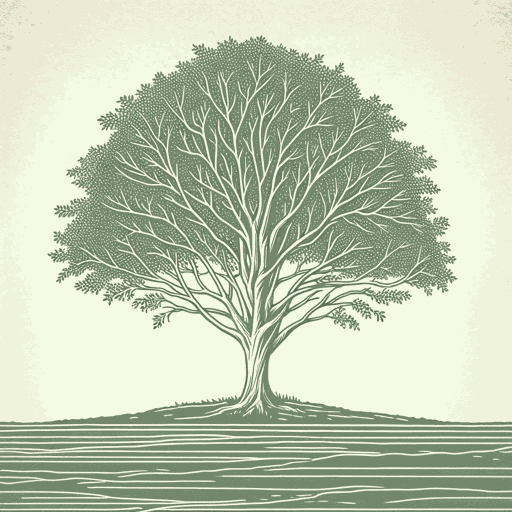66 pages • 2 hours read
Elif ShafakThe Island of Missing Trees
Fiction | Novel | Adult | Published in 2021A modern alternative to SparkNotes and CliffsNotes, SuperSummary offers high-quality Study Guides with detailed chapter summaries and analysis of major themes, characters, and more.
Symbols & Motifs
The Fig Tree
The fig tree is one of the most important entities in the book. It is the object around which the book is centered, structurally and thematically: The sections of the book are named after different parts of a tree; the burying and eventual unburying of the fig tree are important incidents in the book’s storyline; the fig tree even serves as an important character that witnesses numerous things throughout the story’s history and lends its narrative voice to the retelling in multiple chapters.
Symbolically, the fig tree represents numerous things. The tree dates its origins to 1878, the same year the Ottoman Empire concedes the island of Cyprus to the British. This marks the beginning of the “Cyprus problem” in history, which makes up the cultural and historical context of the book. It points to how Kostas’s and Defne’s experiences of conflict is a culmination of events that predates them by multiple generations.
The tree also symbolizes the immigrant experience and the attempt at new beginnings. The 96-year-old version of the tree dies in Cyprus, but Kostas brings a heathy cutting to London, which is replanted and grows into a genetic clone of the original.
Related Titles
By Elif Shafak
Featured Collections
Addiction
View Collection
European History
View Collection
Family
View Collection
Grief
View Collection
Immigrants & Refugees
View Collection
LGBTQ Literature
View Collection
Magical Realism
View Collection
Memorial Day Reads
View Collection
Memory
View Collection
Military Reads
View Collection
Nation & Nationalism
View Collection
Politics & Government
View Collection
Popular Book Club Picks
View Collection
Reese Witherspoon's Hello Sunshine...
View Collection
Religion & Spirituality
View Collection
Romance
View Collection
Safety & Danger
View Collection
Science & Nature
View Collection
Sexual Harassment & Violence
View Collection
The Past
View Collection
Valentine's Day Reads: The Theme of Love
View Collection






